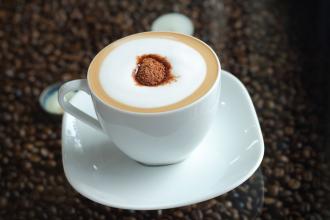Dominica Santo Domingo Coffee with a faint fragrance; an introduction to the characteristics of the manor area
In Spain, the Bourbons replaced the Habsburgs in 1700. The new dynasty introduced a number of economic reforms. Trade in Santo Domingo began to flourish. [3]
French rule (1795-1809)
In 1795 France and Spain signed the Treaty of Basel in Switzerland, agreeing to bring Spain
Dominican
Dominican
The area of Santo Domingo in the eastern part of the island was ceded to France, making the Spanish island a complete French colony. Six years later, Toussaint Louverture, a black Haiti, led a group of other black slaves to rebel against French rule, and in 1801 seized Santo Domingo, which had just been ruled by France, thus unifying the whole island of Spain. [3]
In 1801 Jean L'Oreal arrived in Santo Domingo. He represented the French government in abolishing slavery. In 1802 Napoleon sent troops to conquer the island and ruled for several months. In October 1802, mixed races and blacks revolted against French rule and defeated the French in 1803. On January 1, 1804, the rebels declared Santo Domingo independent and established the Republic of Haiti. However, the defeated French still occupied the eastern part of Santo Domingo. When the French invaded Spain in 1808, the rebels in the eastern part of the island, aided by Britain and Haiti, which were allied with Spain at the time, finally repelled the French forces and made the Santo Domingo area a Spanish colony again. [3]
Occupation of Haiti (1821-1844)
After Santo Domingo returned to Spanish rule, the local people gradually formed a consensus for an independent state. On November 30, 1821, the former Governor of Santo Domingo, General José Núñez de Cáceres, proclaimed a state, named Spain Haiti, and expected to be united under the Grand State of Colombia under the Bolivarian President of South America. [3]
But nine weeks later, in February 1822, Jean-Pierre Boyer, president of Haiti, led his army to occupy Spain's Haiti and reunite the island. After Boyer occupied the Spanish state of Haiti in the east and liberated all slaves there, Boyer ordered the confiscation of white landowners 'land and the return of all agricultural land to the public. Boyer also closed all universities, incorporated all multinational men aged 18-25 into the army, and began a repressive policy against many people, with many upper-class whites leaving the island for Cuba, Puerto Rico, and elsewhere. [3]
Boyer began planting cash crops on the island, reforming taxes and opening it to foreign trade. Although these policies have led to significant increases in Dominican sugar cane and coffee production, they have not been widely accepted by farmers. Boyer regarded the liberation of many countries as a favor he had given many people, so Dominicans in the army were often not paid any salary, and many soldiers began to rob the local population everywhere. This vicious circle eventually led to economic stagnation and increased taxation, leading many peoples, even freed slaves, to unite in rebellion against Boyer's rule and overthrow it in 1843.
Unlike coffee grown in Haiti, coffee grown in the Dominican Republic is mostly washed, a sign of high quality. Miniga Coffee uses water washing to treat coffee beans, so that the quality of treated coffee beans is more guaranteed. Coffee beans treated with water washing method retain more original flavor than drying method, and the aroma is pure and soft.
This method of carefully selected, high-quality Dominican coffee, exudes a light aroma, drinking people can feel a faint fruity taste, lingering aftertaste, smooth and smooth In the early 18th century, coffee from Martinique to Domiga, represented by the northern region of Ciba and the southern region including Ocayabani Santo Domingo, producing fine coffee. Among them, Santo Domingo and Bani produced coffee, almost synonymous with Domica coffee, is world-famous quality coffee. Santo Domingo coffee, characterized by fresh and elegant, full particles, excellent acidity, pleasant aroma, so value for money. Dominican coffee selection is generally done manually. The main basis for selection is according to the fullness of coffee particles, whether uniform, and then divided into grades. Generally speaking, coffee with full and uniform particles is easier to preserve. Only the purest and most uniform coffee beans can be roasted to represent the best coffee in the country.

Important Notice :
前街咖啡 FrontStreet Coffee has moved to new addredd:
FrontStreet Coffee Address: 315,Donghua East Road,GuangZhou
Tel:020 38364473
- Prev

Jasmine-scented Yega Chefevoca Coffee Flavor Manor
Washing Ethiopia can reach the highest level of G1, and it is rare to see this bean from a single farm, Ethiopia, processed by Worka cooperative. Alemayehu Alako Farm is a member of the Waka Cooperative. The Waka Cooperative, located in the south of Gedeb District, was founded in 2005 and joined the famous Yejia Sheffield Coffee Farmers Cooperative that year.
- Next

The taste is smooth, clean and mild. The flavor and taste characteristics of the Mexican coffee manor are introduced.
The Teotihuacan civilization (Teotihuacn) began around 200 BC, about in the middle of what is now Mexico, and was born after the demise of the Olmec civilization, about the same time as the Mayan civilization. the Teotihuacan built a city with a population of about 50, 000 between the first year of AD and 150, making it the earliest city in the entire American region.
Related
- Detailed explanation of Jadeite planting Land in Panamanian Jadeite Manor introduction to the grading system of Jadeite competitive bidding, Red bid, Green bid and Rose Summer
- Story of Coffee planting in Brenka region of Costa Rica Stonehenge Manor anaerobic heavy honey treatment of flavor mouth
- What's on the barrel of Blue Mountain Coffee beans?
- Can American coffee also pull flowers? How to use hot American style to pull out a good-looking pattern?
- Can you make a cold extract with coffee beans? What is the right proportion for cold-extracted coffee formula?
- Indonesian PWN Gold Mandrine Coffee Origin Features Flavor How to Chong? Mandolin coffee is American.
- A brief introduction to the flavor characteristics of Brazilian yellow bourbon coffee beans
- What is the effect of different water quality on the flavor of cold-extracted coffee? What kind of water is best for brewing coffee?
- Why do you think of Rose Summer whenever you mention Panamanian coffee?
- Introduction to the characteristics of authentic blue mountain coffee bean producing areas? What is the CIB Coffee Authority in Jamaica?

